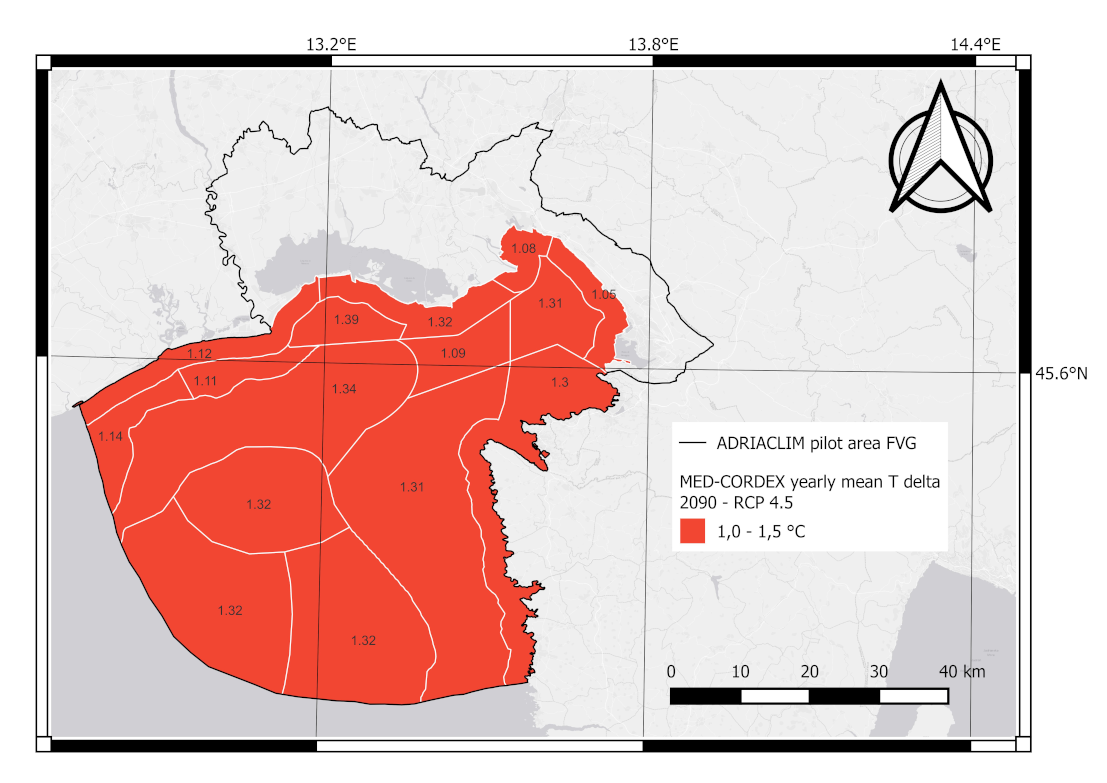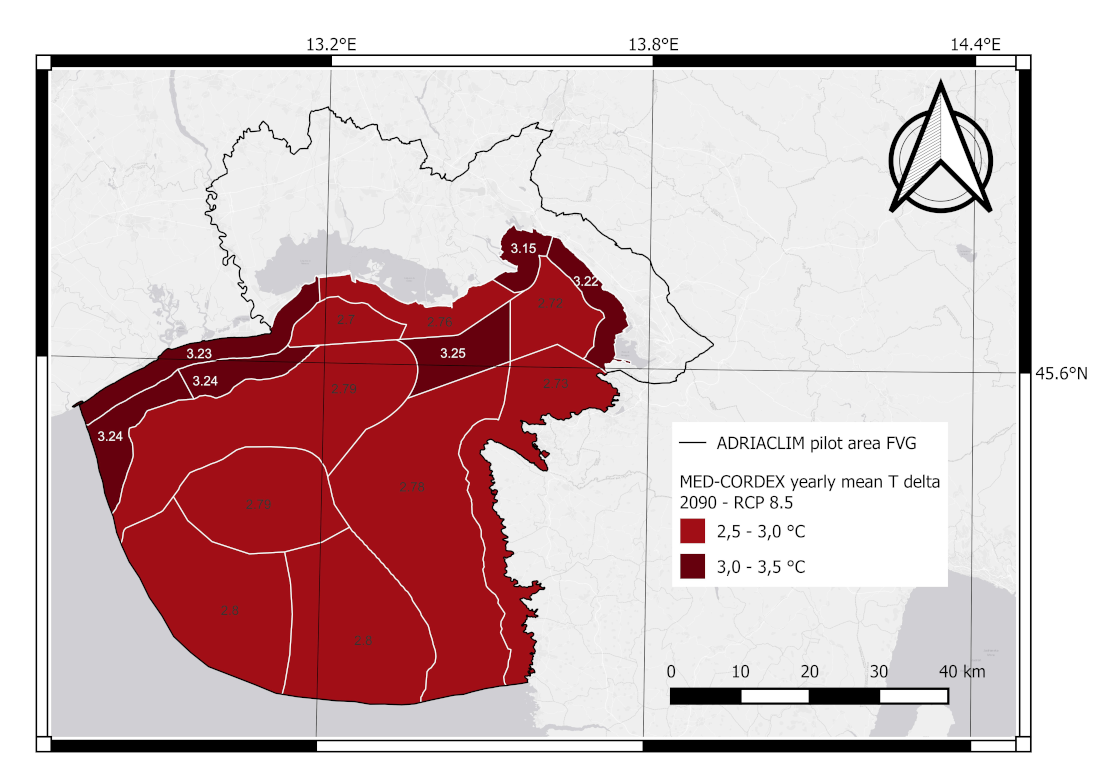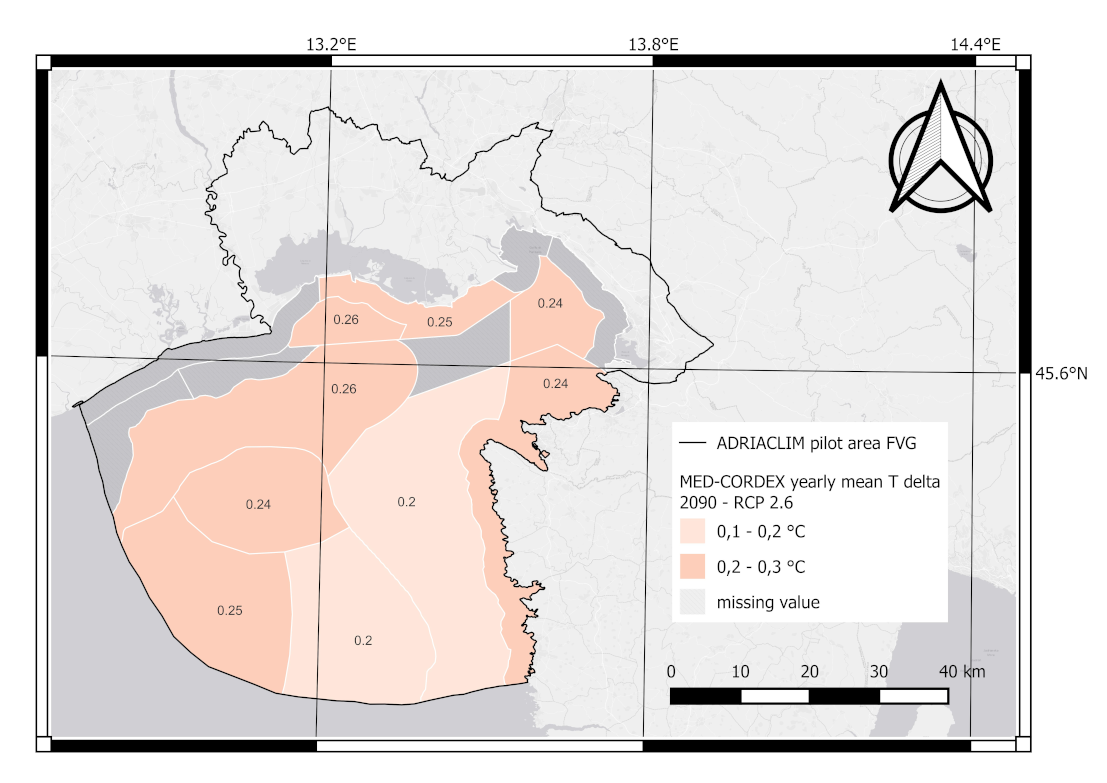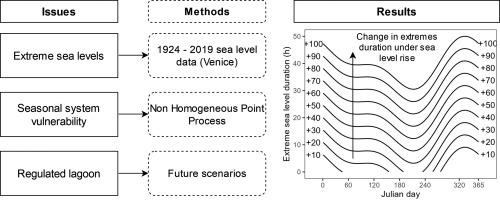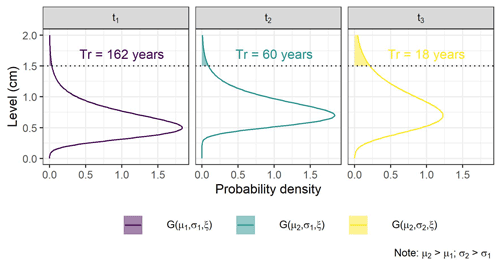The climate elaborations cover a time period up to 2100, divided into decades, and they show the future average variation of physical quantities (such as sea temperature), compared to the reference decade 2010-2020, which is considered representative of the current environmental state, of the Friuli Venezia Giulia pilot area.
Thanks to the results of climate elaborations, which ARPA FVG made using the Med-CORDEX and Euro-CORDEX model outputs, it was possible to attribute the mean sea temperature variation to a specific sector of the Northern Adriatic Sea (including the Gulf of Trieste). Furthermore, additional information was taken into account, such as bathymetry, river inputs and current direction, in order to keep the same methodology that ARPA FVG applies to identify reference water bodies in the monitoring of marine and transitional water quality. Accordingly, this portion of the Northern Adriatic Sea (part of the pilot area of the AdriaClim project for FVG), has been divided into several units that can be considered homogeneous in terms of oceanographic characteristics and that were identified with the support of ARPA FVG marine biologists engaged in the daily monitoring of the regional marine-coastal waters.
Therefore, several thematic maps were plotted, for each different emission scenarios and decades. These maps show the possible future average variation of water surface temperature, compared to the decade 2010-2020, in the different marine units of the pilot area. The following maps illustrate the possible situation at the end of the century for the three different emission scenarios considered.
These results contribute to the achievement of the project's WP5 objectives.

